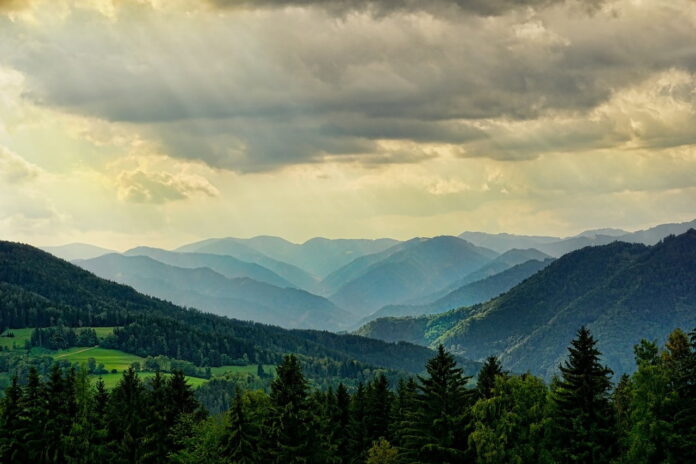Forests, the verdant tapestries that drape vast expanses of our planet, are often celebrated for their majestic beauty and the sense of tranquility they bestow. Yet, beyond their aesthetic allure, forests serve a far more critical role as silent guardians against the escalating threat of climate change. These complex ecosystems, which cover about 31% of the global land area, are not merely passive landscapes but dynamic powerhouses that actively shape the Earth’s climate and support life in myriad forms. This article delves into the multifaceted contributions of forests in mitigating climate change, exploring their carbon sequestration capabilities, their role in fostering biodiversity and resilience, and the strategies necessary to preserve and expand these natural treasures for a sustainable future.
The Carbon Sequestration Powerhouse: How Forests Combat Climate Change
Forests are nature’s own carbon capture and storage systems. Through the process of photosynthesis, trees and other plants absorb carbon dioxide (CO2) from the atmosphere, converting it into organic matter and releasing oxygen in return. This remarkable ability makes forests a vital buffer against rising atmospheric CO2 levels, which are primarily responsible for the greenhouse effect and global warming. It is estimated that forests sequester approximately 2.6 billion tonnes of CO2 annually, a service that is both invaluable and irreplaceable in our efforts to curb climate change.
The dense canopies and rich soil of forests not only store carbon but also regulate local and global climates by influencing weather patterns and stabilizing temperatures. The Amazon Rainforest, often referred to as the “lungs of the Earth,” exemplifies this role. It produces about 20% of the world’s oxygen and plays a crucial part in the water cycle, affecting rainfall distribution across the Western Hemisphere. However, deforestation and forest degradation pose significant threats to this carbon sequestration powerhouse. When forests are cleared or burned, the stored carbon is released back into the atmosphere, exacerbating the problem they once helped to mitigate.
To fully harness the climate-regulating potential of forests, it is essential to understand the different types of forests and their sequestration capacities. For instance, old-growth forests, with their ancient trees and rich biodiversity, store vast amounts of carbon, much more than younger or managed forests. Mangroves, though occupying less area than terrestrial forests, sequester carbon at a rate four times higher per unit area, making their conservation equally critical. Recognizing the unique contributions of various forest types is key to prioritizing conservation efforts where they can have the most significant impact.
Biodiversity and Resilience: The Ecological Triumphs of Forest Ecosystems
Forests are not only carbon sinks but also the cradles of biodiversity. They provide habitat for over 80% of terrestrial species, from the towering trees to the myriad of plants, animals, fungi, and microorganisms that form complex and interdependent communities. This rich biodiversity ensures ecosystem resilience, allowing forests to adapt to changing conditions and recover from disturbances such as fires, storms, and pests. A diverse forest is a robust forest, capable of withstanding the pressures of climate change while continuing to provide essential services.
The resilience of forest ecosystems is also tied to their ability to maintain hydrological cycles, prevent soil erosion, and purify air and water. Trees act as natural filters, trapping pollutants and dust particles with their leaves and bark. Forested watersheds supply fresh water to over a third of the world’s largest cities, highlighting the direct link between forest health and human well-being. The intricate web of life within forests also offers a wealth of knowledge and resources, including medicinal compounds, genetic material for crop improvement, and insights into sustainable living.
However, the loss of biodiversity due to deforestation, habitat fragmentation, and climate change poses a severe threat to these ecological triumphs. Each species lost potentially unravels the fabric of the ecosystem, diminishing its overall health and functionality. The urgency to protect forest biodiversity has never been greater, as it is not only an ethical imperative but also a practical necessity for our own survival.
Preserving and Expanding Forests: Strategies for a Greener Future
The preservation and expansion of forests are critical strategies in the fight against climate change. Protecting existing forests, particularly primary forests that have never been logged or degraded, is the most immediate and cost-effective approach. This requires strong legal frameworks, effective enforcement, and the engagement of local communities who are often the best stewards of these lands. Incentives for conservation, such as payments for ecosystem services, can provide financial support for those who protect forests.
Reforestation and afforestation are also vital, involving the planting of trees on deforested or degraded land and the creation of new forests where none existed before. These efforts not only sequester carbon but also restore habitat and rebuild ecosystems. However, it is crucial that these initiatives prioritize native species and consider local ecological contexts to ensure the long-term success and ecological integrity of new forests.
Sustainable forest management is another key strategy, balancing the need for timber and other forest products with the preservation of ecosystem services. This includes practices such as selective logging, reduced-impact logging, and the certification of sustainably sourced forest products. By supporting sustainable forestry practices, consumers can directly contribute to the health of forest ecosystems.
Finally, integrating forest conservation into broader climate change policies and land-use planning is essential. Forests must be recognized as a critical component of the global climate solution, and their value must be factored into economic decisions and development projects.
Forests stand as unsung heroes in the fight against climate change, offering a suite of natural solutions that are as elegant as they are effective. Their ability to sequester carbon, support biodiversity, and provide resilience is unparalleled. Yet, their silent service is often overlooked in policy and economic decisions. It is time to amplify the voice of forests in the climate dialogue, recognizing their vital role and ensuring their protection and expansion for generations to come.
